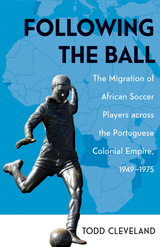
Henderson traces the origins of ball sports to religious rites in ancient Egypt, where the ball (perhaps a shrunken head) represented a fertility symbol and opposing teams engaged in mock combat signifying the struggle of good against evil. Centuries later, pagan fertility rites featuring the ball were adapted by the Christian church as rituals symbolic of Easter and the Resurrection. Court tennis was also firmly rooted in the church, the earliest players being the bishops, canons, and clerics who played it in their cloistered courtyards.
Henderson overturns the popular belief that the game of racquets originated in the debtors' prison on Fleet Street in the early nineteenth century. He also notes that polo, the most ancient of games played with stick and ball, originated in Persia and migrated to China and India, where it was eventually embraced by English imperialists. Other sports discussed include football, lawn tennis, cricket, and golf.
The most substantial portion of Henderson's study is devoted to the game of baseball. Providing copious evidence of early forms of baseball played in England and the United States before 1829, he offers a meticulous account of the legerdemain by which Abner Doubleday, the famous Civil War general, came to be identified as the inventor in 1839 of a game that was already at least two centuries old.
The new foreword by Leonard Koppett affirms the significance of this classic work of sports history, which was the first to dismantle the Doubleday/Cooperstown myth.

Almost thirty years later, Wiggins’s second anthology is a comprehensive collection that examines the complex intersection of race, sport, and American culture, discussing the experiences, challenges, and victories of Black athletes throughout the twentieth century. Featuring eleven previously published essays, Ball in My Hands: Black Athletes, Race, and American Culture weaves storytelling and scholarly discussion together in its exploration of well-known figures like Olympic decathlon champion Milt Campbell, professional tennis icon Arthur Ashe, Olympic sprinter Vince Matthews, civil rights activist Harry Edwards, basketball legend Kobe Bryant, and more. In his final essay, Wiggins reflects on his experiences as a White scholar who has spent his forty-year academic career analyzing and writing about experiences of African Americans in sport and the interconnection among race, sport, and American culture.
With an original introduction and a foreword from Damion L. Thomas, Museum Curator of Sports at the Smithsonian’s National Museum of African American History and Culture, Ball in My Hands is not simply a collection of biographies on individual athletes or write-ups on athletic institutions—rather, it offers a wide-ranging discussion of the history and meaning of African American sport that will engage not only scholars of African American history and sport history, but educators, sports enthusiasts, and general readers alike.

With Following the Ball, Todd Cleveland incorporates labor, sport, diasporic, and imperial history to examine the extraordinary experiences of African football players from Portugal’s African colonies as they relocated to the metropole from 1949 until the conclusion of the colonial era in 1975. The backdrop was Portugal’s increasingly embattled Estado Novo regime, and its attendant use of the players as propaganda to communicate the supposed unity of the metropole and the colonies.
Cleveland zeroes in on the ways that players, such as the great Eusébio, creatively exploited opportunities generated by shifts in the political and occupational landscapes in the waning decades of Portugal’s empire. Drawing on interviews with the players themselves, he shows how they often assumed roles as social and cultural intermediaries and counters reductive histories that have depicted footballers as mere colonial pawns.
To reconstruct these players’ transnational histories, the narrative traces their lives from the informal soccer spaces in colonial Africa to the manicured pitches of Europe, while simultaneously focusing on their off-the-field challenges and successes. By examining this multi-continental space in a single analytical field, the book unearths structural and experiential consistencies and contrasts, and illuminates the components and processes of empire.
READERS
Browse our collection.
PUBLISHERS
See BiblioVault's publisher services.
STUDENT SERVICES
Files for college accessibility offices.
UChicago Accessibility Resources
home | accessibility | search | about | contact us
BiblioVault ® 2001 - 2024
The University of Chicago Press









